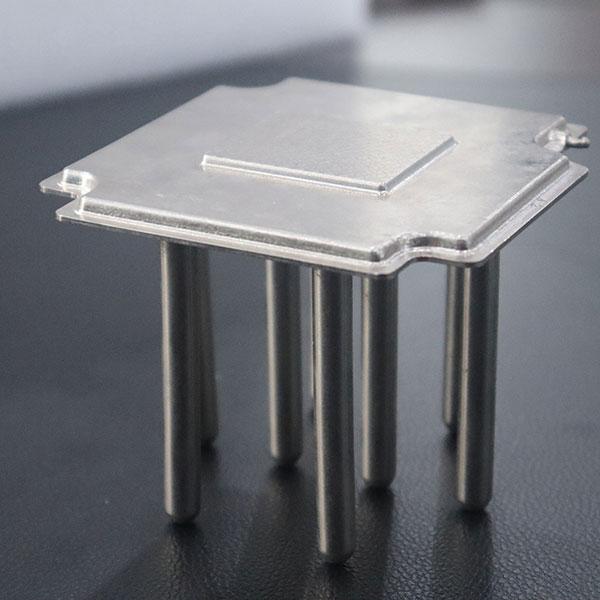Notifications

12 minutes, 37 seconds
-43 Views 0 Comments 0 Likes 0 Reviews

In today's fast-evolving world of electronics, demand for faster, thinner, and more powerful devices is constantly pushing the boundaries of thermal management. Whether we're discussing the latest smartphones, gaming consoles, or high-performance computing systems, heat remains a significant challenge. Overheating in devices can lead to performance throttling, reduced lifespan, or even component failure. Therefore, advanced cooling solutions have become more crucial than ever. Enter the 3D vapor chamber—a next-generation technology poised to transform heat dissipation in high-performance electronics.
At Tone Cooling Technology Co., Ltd., we strive to stay ahead at the forefront of thermal innovation. As a leader in cutting-edge cooling systems, we've been closely monitoring the evolution and implementation of 3D vapor chambers across various industries.
A vapor chamber is a type of heat spreader that utilizes the principles of two-phase cooling. It consists of a sealed, flat container—commonly made of copper—filled with a small amount of working fluid (typically water). When heat is applied to one area of the vapor chamber, the liquid evaporates and spreads rapidly to the cooler parts, where it condenses and releases the heat. This cycle continues in a loop, providing efficient heat transfer across the entire surface.
While traditional vapor chambers are incredibly effective, they are largely two-dimensional. Their flat structure limits the direction and area over which heat can be spread. With devices becoming increasingly three-dimensional in both structure and function—think vertical GPU cooling or stacked chip modules—standard vapor chambers are sometimes unable to provide adequate heat diffusion.
This limitation has paved the way for the development of 3D vapor chamber technology, which not only adapts to modern form factors but also significantly enhances thermal efficiency.
A 3D vapor chamber is an advanced thermal management device that extends the traditional flat vapor chamber design into three dimensions. This allows for more flexible integration into compact and complex electronic designs, as well as more efficient heat dissipation.
By moving beyond the flat-plane design, 3D vapor chambers can conform to irregular device shapes and provide targeted thermal control for individual chipsets, including VRMs, GPUs, CPUs, and even stacked multi-chip modules (MCMs).
At their core, 3D vapor chambers operate on the same two-phase heat transfer principles as their flat counterparts. However, their internal structure is engineered to support complex vapor flow pathways, allowing for more efficient handling of high heat fluxes.
With ultra-thin designs and powerful SoCs (System-on-Chip), handheld devices generate substantial heat that needs to be dissipated in minimal space. 3D vapor chambers are ideal because they can be molded into the device’s form without compromising internal space.
Gaming consoles, GPUs, and high-performance laptops generate immense heat during extended gameplay. A 3D vapor chamber can manage hotspots more efficiently across multi-layered and angle-contoured surfaces, ensuring better frame rates and system longevity.
Power-dense environments like data centers benefit from the integration of 3D vapor chambers in their cooling loops, especially where CPUs and GPUs are tightly packed into vertical configurations.
As vehicles become smarter and electric systems more compact, managing heat in ECUs and onboard sensors has become a critical task. 3D vapor chambers ensure stability and thermal safety in harsh conditions.
Wearables like smartwatches and fitness trackers also generate heat. Though their size is small, efficiency is critical. Thin and form-fitting 3D vapor chambers can dissipate heat without bulk.
In essence, 3D vapor chambers offer not only superior heat dissipation but also unmatched design flexibility. Here’s how they stand out:
They adapt easily to irregular or vertical designs, making them ideal for the next generation of smart, smaller, and more integrated electronics.
Their 3D wicking structure and enhanced vapor flow allow for faster and more efficient heat transportation, even when heat isn't evenly distributed.
By spreading heat both horizontally and vertically, these structures eliminate hotspots more effectively than traditional alternatives.
They can be custom-designed to fit small, sensitive spaces without adding bulk—invaluable for lightweight electronics.
At Tone Cooling Technology Co., Ltd., we invest heavily in developing high-performance thermal solutions tailored to the challenges of modern electronics. Our proprietary 3D vapor chamber technology exemplifies our commitment to pushing thermal boundaries.
With in-house manufacturing facilities, advanced testing labs, and a dedicated R&D team, we ensure every product meets the highest reliability, quality, and thermal efficiency standards.
We offer tailored solutions for:
To demonstrate the real-world value of 3D vapor chambers, consider a recent collaboration with a popular gaming laptop manufacturer. The challenge: Keeping the CPU and dual high-performance GPUs below 80°C under load in a chassis under 20mm thick.
We’re just scratching the surface of what 3D vapor chambers can do. As chip packaging becomes more complex (e.g., 3D ICs and chiplets), future vapor chambers will need to evolve in the following ways:
Even smaller chambers, possibly under 0.4mm thick, will be required for microelectronics and edge devices.
Nanostructured wicks to improve liquid return and phase-change efficiency.
Coupling 3D vapor chambers with AI-managed fans, liquid loops, and even fiber-based heat spreaders.
3D printing technologies may soon enable on-chip vapor chamber formation directly during wafer processing, reducing assembly costs and enhancing thermal integration.
As electronic devices continue to become faster, smaller, and more powerful, thermal management is set to play a decisive role in ensuring their performance and longevity. The 3D vapor chamber is no longer a futuristic idea—it’s a present-day solution for next-generation thermal challenges.
At Tone Cooling Technology Co., Ltd., we're excited about the potential this innovation holds. Combining science, engineering, and user-focused design, we continue to lead the charge toward smarter, more efficient, and more reliable heat dissipation systems.
1. What is the difference between a 2D and 3D vapor chamber?
A 2D vapor chamber is generally flat and spreads heat across a single plane, ideal for uniform surfaces. A 3D vapor chamber, on the other hand, features a contoured or multi-layer design that can spread heat in multiple directions and conform to complex shapes.
2. Are 3D vapor chambers more expensive than traditional solutions?
Yes, due to their complexity and tailored design. However, the performance benefits often outweigh the extra cost—especially in high-performance or thermally constrained designs.
3. How thick is a 3D vapor chamber?
Thickness can vary depending on the application, ranging from under 0.5mm to several millimeters. Ultra-thin versions are available for compact devices like smartphones and wearables.
4. Can 3D vapor chambers be customized for specific products?
Absolutely. At Tone Cooling Technology Co., Ltd, we specialize in creating fully customized 3D vapor chamber solutions based on your device's layout, performance requirements, and operating conditions.
5. Are 3D vapor chambers safe and reliable?
Yes. Like traditional vapor chambers, they are sealed, passive systems with no moving parts, making them highly reliable and maintenance-free over long lifespans.
6. What kind of working fluid is used inside a 3D vapor chamber?
Typically, purified or deionized water is used due to its high latent heat and thermal stability. In some applications, methanol or specialized fluids may be used.

